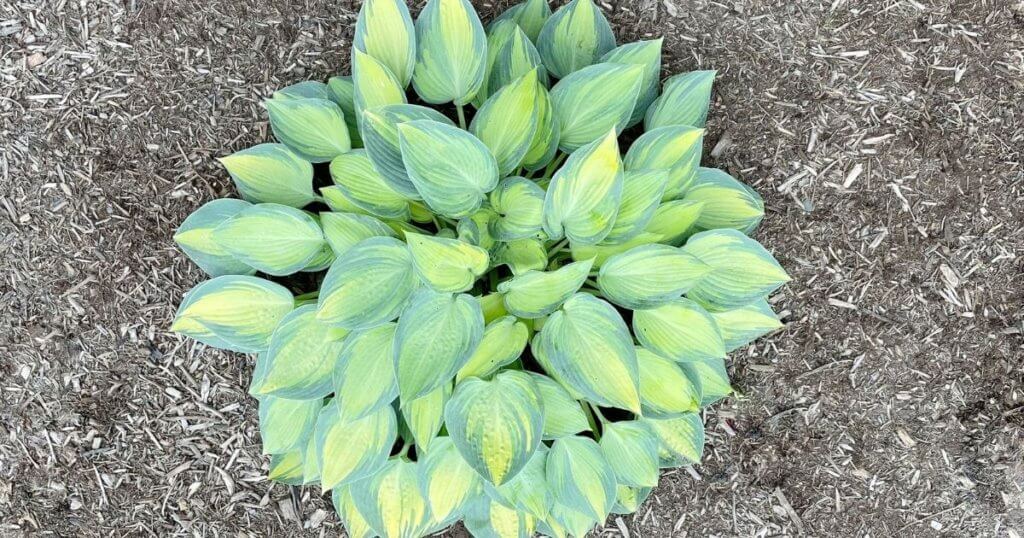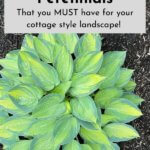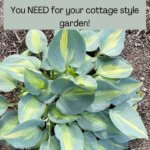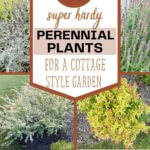Do you love hard-to-kill perennials and cottage style, wildflower-type plants and shrubs for your landscape and garden?
Well, then you’re in the right place! Today we’re going to talk about some hardy perennial plants and shrubs that survive in tough conditions.
I have “stick to your shoes when wet”, “hard as concrete when dry”, clay soil. This may possibly be one of the worst soil types you can have for plant growing. But you know what, some low-maintenance plants can survive and thrive even in these conditions!
Some people like tropical or modern-style landscapes. But me, I just love wildflowers and cottage-style flowers, plants, and bushes. Something about the imperfect, jumbled-up chaos just speaks to me I guess. 😉
The great thing is these plants are usually tough-as-nails, especially the ones that I’m going to talk about today.
We live in USDA growing zone 6a, so be sure to check your growing zone to make sure that the plants are perennials in your area before planting. I’ve included the growing zone for each plant.
Read on for a list of my favorite hardy, low-maintenance perennials that I would highly suggest if you’re like me and you love cottage-style landscapes and gardens!
Blue Toned Hostas
Let’s start it off with a tried-and-true favorite of mine. Hostas are usually used in shade gardens, but some are sun tolerant. This means that they can take direct sun for part of the day.
My favorites are blue-toned Hostas and I have two kinds growing happily along the north-facing wall of my house right now.
There are quite a few different varieties with blue-green colors. The ones that I have are the June Hosta and the Touch of Class Hosta which can have a spread of up to 3 feet.
These guys (pictured below) get a bit of morning sun, then shade during most of the day, but then get some evening sun as well. They were planted two years ago and are flourishing even in my clay soil.
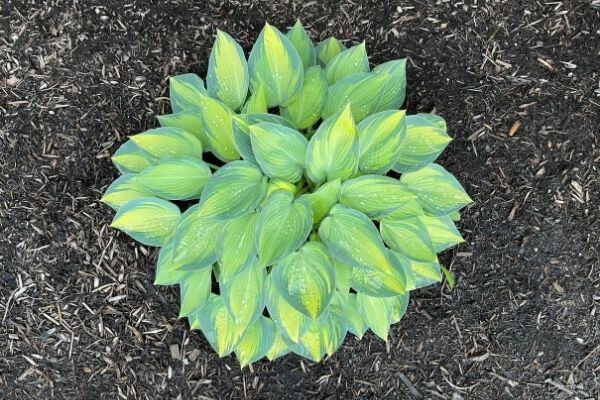
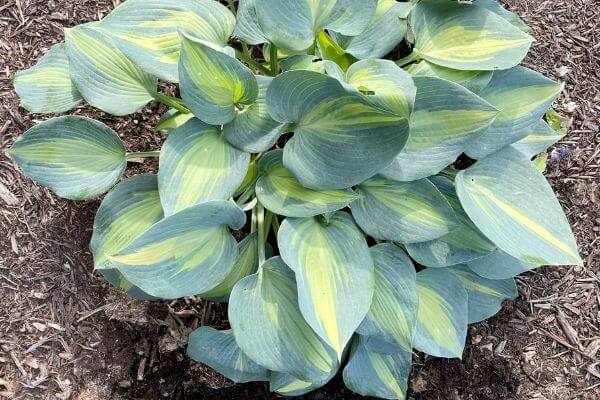
Hostas are generally hardy in zones 3-9, and their foliage gives such nice interest to your cottage-style landscape. These plants also produce small flowers which shoot up on long stems, however, they are best known for their beautiful leaves.
Limelight Hydrangea Shrub
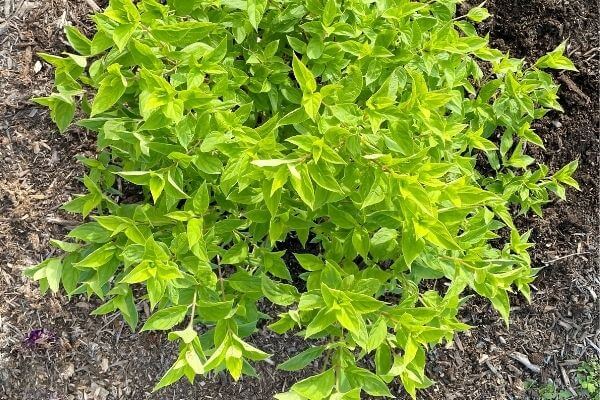
All hydrangeas give a lovely cottage vibe to a landscape and come in a variety of colorful blooms. However, my absolute favorite is a shrub called the Limelight Hydrangea.
Its flowers range in color from green to white to pink across the growing season. This shrub can grow to 6 feet tall and wide so it needs a larger area than some shrubs.
The Limelight does come in a smaller, more compact size as well, and is called the Little Lime (shown above). This smaller variety grows up to 3-5 feet tall and wide. So if you’re looking for a hardy shrub in a more compact size this is the one to find!
These hydrangeas generally like partial shade regions and are hardy in zones 3-9. Mine are growing nicely along the northern wall of my home.
Lamb’s Ear Plant
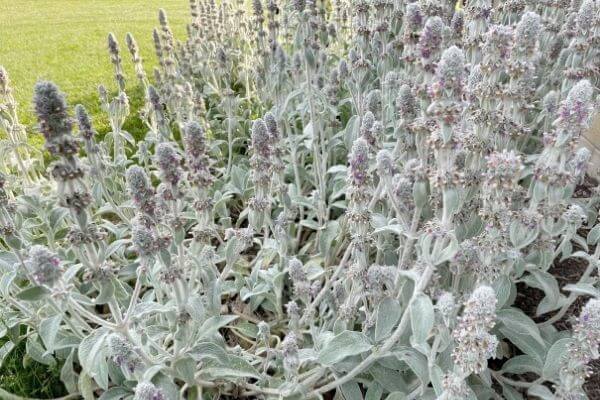
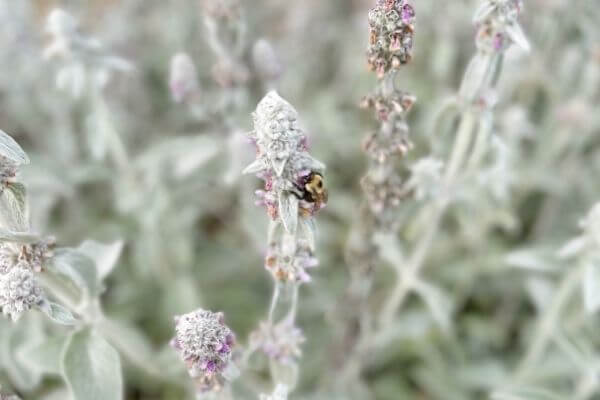
Lamb’s Ear is a muted, silvery-blue plant that is tough as nails and the soft leaves are a favorite of both my kids and me. The plant gets its name from these furry feeling leaves.
I have them growing along the south-facing wall of my home, but I’m confident this plant can grow just about anywhere! I wouldn’t be surprised to find one growing right out of the pavement one day!
The blooms shoot up from the plant and produce purple flowers which the bees absolutely love! So they’re great for the pollinators out there!
These feisty plants are perennials in zones 4-8 and their leaves generally grow 8 inches, however, their flower spikes reach higher and mine are currently growing up to 30 inches tall.
I have found sproutlings of this plant all over the yard, so be aware, they can spread easily and grow just about anywhere.
Stonecrop Plant
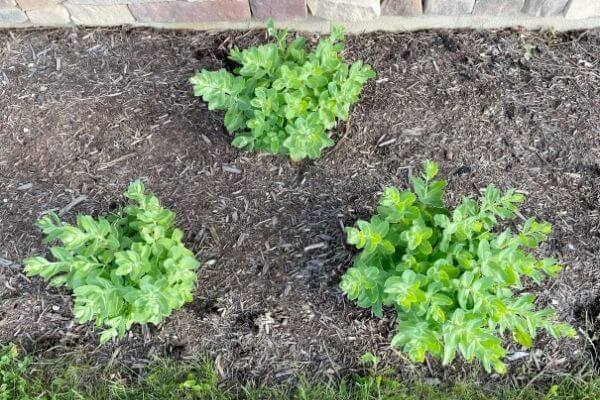
There are a wide variety of different plants under the Stonecrop umbrella, however, the kind that I have growing along the northern wall is called Autumn Fire Sedum.
These plants have greyish-green leaves that are reminiscent of a succulent. The flowers of the Autumn Fire are red or pink and bloom in a burst at the top of the plant. Sort of like little clouds sitting atop the stem.
These tough little plants can reach up to two feet tall and are hardy in zones 3-9. I have mine planted in a cluster of three and they have been very easy to care for even in my very poor soil conditions.
Salvia or Meadow Sage
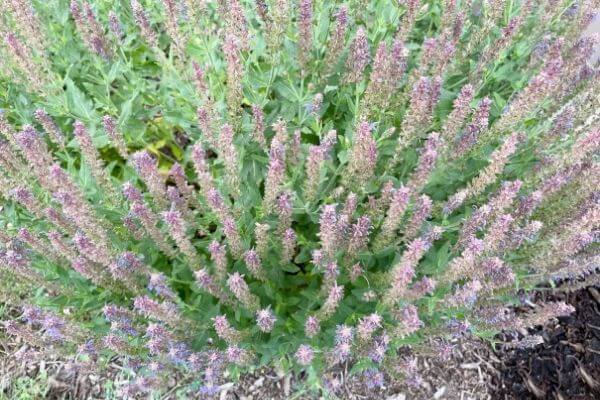
Salvia plants look a lot like wildflowers in my opinion and are sometimes also called meadow sage. I have the Blue Hill variety growing in my landscape planting.
Blue Hill Salvia sprout purplish-blue flowers that are a favorite of honey bees and butterflies!
They have no difficulty growing in a variety of locations. I have several planted along the south-facing wall, but also the western-facing side of my home.
This hardy little plant can grow to about 2 feet in height, requires little care, and is a perennial in zones 4-8.
Spirea Shrub

Goldflame Spirea is a beautiful, low-maintenance little shrub that grows along the southern side of my home. It gets a good bit of sun there throughout the day.
This shrub is small and more compact, growing to about 3-4 feet tall and wide. Therefore, it needs just a little pruning in the early spring.
This shrub has beautiful foliage ranging in color from gold to yellow/green to red and also produces pink spires of flowers during the summer months.
Goldflame Spirea is a perennial in zones 4-8 and is valued for the beautiful foliage and low-maintenance qualities that it possesses.
Winter Heather
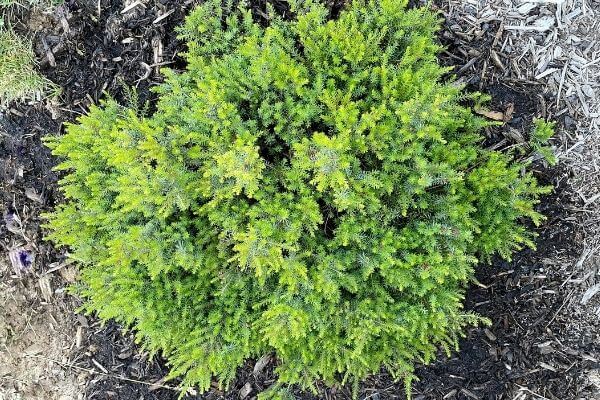
I always imagine rolling English countrysides when I think of the Heather plant. So what would be better for a cottage-style landscape?
One of my favorite low-profile plants is Heather. I have the winter Heather variety growing along the southern side of my home where it gets a good bit of sun throughout the day.
The plant is evergreen so it gives the winter landscape some nice interest. And it’s needles display a dark forest green color in winter, and lighter green in summer.
Unlike most plants, this evergreen sprouts pink flowers during the winter season.
The mounding variety only gets about a foot high but can reach about 2 feet in width. This plant is a perennial in zones 4-8.
I love that it looks so pretty in a snowy landscape when most other plants are bare and flowerless.
Butterfly Bush

The unruly nature of this plant lends itself to cottage-style gardens. As its name suggests, it attracts butterflies, along with bees and sometimes hummingbirds.
The disclaimer to this little plant, however, is that it can be considered invasive in certain areas. So it’s a good idea to check on this in your area before planting this guy.
This plant grows very easily, even in our clay soil, and the variety I have produces purple spires that butterflies flock to. I have it planted along the southern and western walls of our home and it does well in both places.
It is hardy up to growing zone 5 and some years I’ve trimmed mine down to about a foot from the ground in early spring before new growth appears. This seems to produce a greater amount of flowers and a more rounded-looking bush.
This low-maintenance bush is a favorite because it is tough as nails, produces beautiful blooms, and attracts butterflies which we all love to see in our gardens.
Dappled Willow Shrub
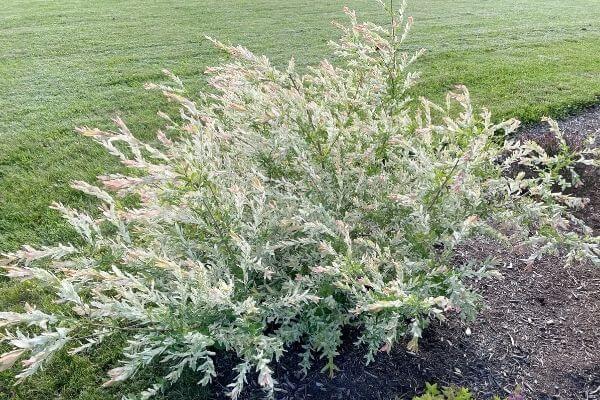
Hardy in growing zones 4-9, this striking hedge/tree is valued for its foliage which has white and pink tips. The plant’s tag that I purchased says that it grows to 4-6 feet tall and wide.
I have heard that willow trees require a lot of water and will seek out water lines in the ground, so it’s a good idea to plant them away from pipes.
This shrub is a fast grower and although my tag said 6 feet, I’ve read that it can grow to 10 feet. Pruning your bush to the desired height should help to curb this if you want a smaller shrub.
My Dappled Willow seems happy in a south/western corner of my home, as they generally desire a good bit of sun. It’s branches are red in color which gives some nice interest in the wintertime when it has shed its leaves.
The Dappled Willow’s hardy and fast growing nature, along with its stand-out foliage make it a winner for your cottage style landscape. Oh, and it’s an easy plant to propagate for additional shrubs too!
Korean Spice Viburnum
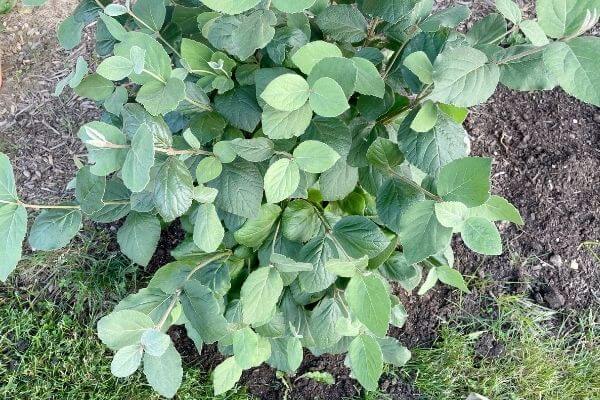
So this is the bonus plant on the list because I just planted this one a few weeks ago. This shrub was recommended to me by some avid gardeners and I searched quite a few greenhouses before finding it.
Korean Spice Viburnum blooms in early spring and has pink flowers, changing to white. The reason that I went on a search for this shrub is the strong spicy, vanilla fragrance that the blooms emit.
I planted these bushes on the sides of my entryway on the northern portion of my home. That way guests can enjoy the fragrant flowers when they come to visit.
The bush tolerates full sun to part shade, the blooms attract butterflies, and the leaves turn a reddish-purple shade in the fall making this a showy shrub.
Growing up to 6 feet tall and wide, the Korean Spice Viburnum is a hardy shrub that does well in zones 4-7. I have high hopes that these plants will bloom next spring and give me aromatic flowers, as right at this moment (summer-time) they are bloomless and green. 😉
Final Thoughts on Hardy Perennials with Cottage Style
So wrapping up, these are my top 10 hardy and low-maintenance perennials for a cottage-style landscape and garden.
Just about all plants, if you read about them, enjoy moist, well-drained soil. However, all of these are surviving and thriving even in my clay soil, which is saying something about their toughness!
I did dig a hole about 3 times the size of the pot when I planted them. And then I filled it with bagged topsoil and mushroom compost or peat moss to give them a head start.
I also watered them regularly that first summer after planting to ensure that they had a good start. I now try to water them once a week during dry spells.
These plants and shrubs will give your landscape a bit of charming, wildflower-type interest and the bonus is that they are tough as nails which makes taking care of them a breeze!
Included in this post are some quick tips and things I’ve learned over the years about each plant and shrub. However, I would recommend checking out the website thespruce.com for more detailed information about each perennial before planting.
I snap all my own pics for my posts, so I’ll be adding some additional pics to this article as my summer and fall bloomers start sprouting their flowers. So be sure to check back in!
Leave me a message in the comments if you have a favorite hardy perennial that you would add to this list!
Related Articles about Planting and Gardening
Sheet Mulching for the DIY Landscaper and Gardener

